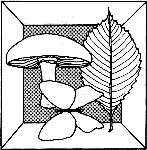How To Collect And Prepare Forest Insect And Disease Organisms And Plant Specimens For Identification
Plant Specimen Collection If a tree appears to be unhealthy, examine it and its environment closely. Examine other trees of the same species in the vicinity as well as those of other species. Determine, if possible, whether other similarly affected trees occur in groups or are scattered more or less randomly through the stand. Next, check the immediate surroundings of the affected trees. Look for disturbances of soil and other vegetation and evidence of underground systems such as utility lines. Observe a wide area and adjacent farmland, if any, for evidence of herbicides or other pesticide use. These environmental factors are especially important in shade tree disease diagnosis. Be as specific as possible about the presence of streets, buildings, and cultural practices such as pruning. Look at the symptoms. Has the tree suddenly turned brown or has it defoliated gradually while remaining green? Has the tree begun to decline from the top down? Has the bark loosened? Did the tree wilt while still green? Are the leaves curled? All of these and any other similar "expressions" by the tree are called symptoms and are the first consideration in diagnosis and possible specimen selection. While studying them, think back to conditions over the past year. Were there extremes in temperature, droughts of any consequence or other factors detrimental to plant growth and development? While examining the tree for symptoms, look also for signs. Signs are physical evidence of causes, i.e., insects and disease organisms. Fruiting bodies, such as conks and mushrooms, are the signs produced by fungi. They may be found growing on the host tree itself, on the ground around it or on nearby stumps and logs. Examples of insect signs include frass and cast larval skins, and the insects themselves. Carefully collect and prepare suspicious specimens for shipment, using the suggestions given later in this booklet. Not all fungi and insects in the vicinity of the unhealthy tree may be the cause of the problem. Try to establish some relationship between the affected tree, its unhealthy or dead neighbors and the specimen(s) you collect. Smaller trees are easier to examine than large ones and may permit a more thorough field diagnosis. No matter how large or small, however, examine the entire tree, if possible. When present, foliage can be an invaluable aid. However, it may only be symptomatic of a problem centered elsewhere. For example, wilted leaves or top dieback do not necessarily indicate the presence of foliar insects or diseases, but may instead result from the effects of a stem or root pest. Check the host for loose or dead bark, for cankers on limbs and stems, insects or insect parts, and for root and root collar damage. However, do not submit bark by itself unless cankers,fruiting bodies, or possibly characteristic insect damage are present on it. Many organisms inhabit the bark and thus isolation from this material produces much contamination. If possible, insects to be collected should be killed in the field. Soft bodied specimens such as aphids and beetle larvae may simply be dropped in alcohol. Put moths and most hard bodied insects in a killing jar. The best killing jars are widemouthed, with about ¾ inch (19 mm) of hardened plaster of paris in the jar bottom. A few drops of ethyl acetate (nail polish remover) are added to the plaster of paris where they are quickly absorbed. Some tissue paper added to the killing jar will help prevent moths from damaging their wings against the jar sides and bottom. |
Forest Pests: Insects, Diseases & Other Damage Agents |

|
|


